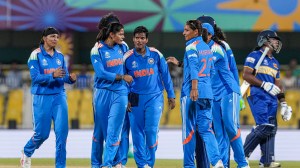My Country, the Calendar
In 2003 we’re used to fine books published on Indian art that do not see through the old Orientalist filter. Even so, along comes somet...

In 2003 we’re used to fine books published on Indian art that do not see through the old Orientalist filter. Even so, along comes something every now and then that makes the crankiest reviewer want to do handsprings. OUP’s new book is by archaeologist-author Neumayer who works on the prehistoric art of South Asia and artist-art history teacher Schelberger. They say what began as “a purely personal (and subjective) endeavour to understand the evolution of popular Indian aesthetics… gradually led to an exploration of the industrial history of the early litho presses and several other related subjects on popular Indian art”.
Fortified by 173 colour plates sourced from the authors’ collection as well as primary sources from the estate of Raja Ravi Varma in Kilimanoor in Kerala, archives in Trivandrum and German museums, the narrative takes us from the accidental invention of the oleograph, circa 1796, by German playwright Aloys Senefelder to the core of its focus: the beginning of the 20th century until the 1950s, since that period forms the core of the author’s collection. It loops lightly however to as recent a display as the “highbrow” ‘Kitsch-Kitsch Hota Hai’ exhibition in 2001 in New Delhi. In terms of new sociological-cultural insight on India, the book does not hold any dazzling new revelations for the Indian reader-artoholic. What is most valuable though is the detailed perspective on technology impacting on “display art”.



- 01
- 02
- 03
- 04
- 05



























